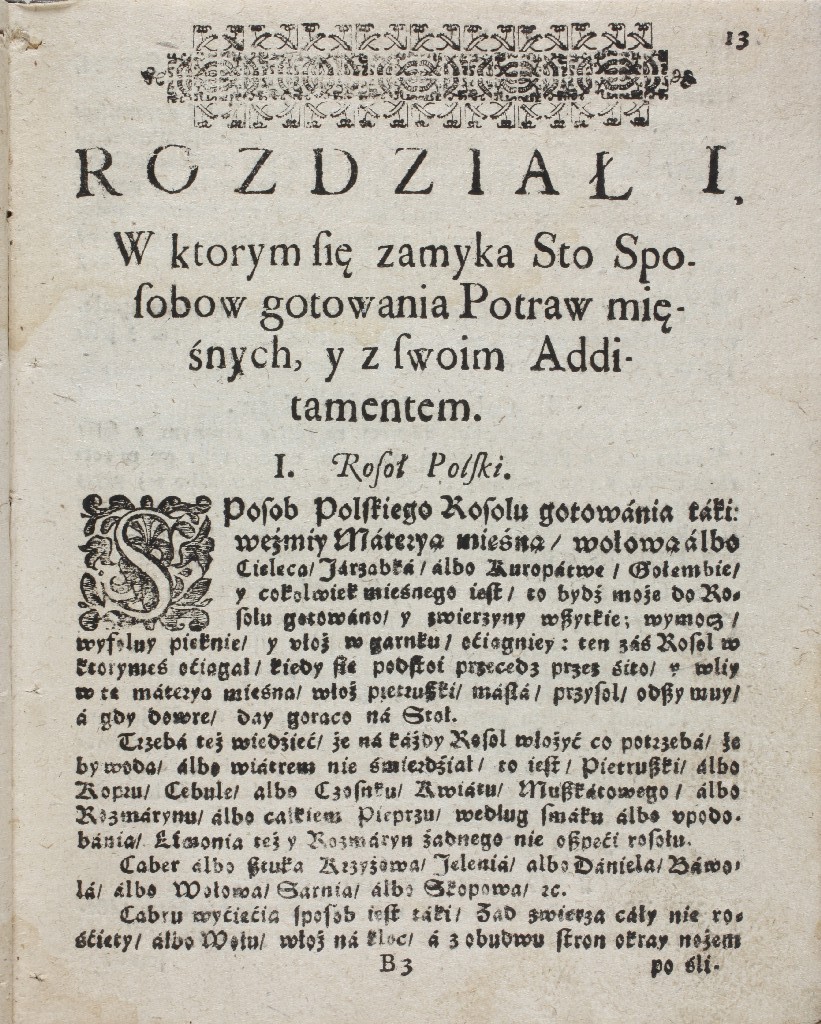
One of the most important tasks of a chef in old Poland was to take care of his master and prepare dishes that would suit his mood and condition. Stanisław Czerniecki wrote in Compendium ferculorum: "the chef should know how to do many things and should have experience in matters that are crucial to human life or at least he should know how to please the healthy and the sick."
Thus, a cooking artist is, in the author's opinion, first of all an experienced expert in human life and all sorts of life problems. In this case, the most important of them were health problems and our chef kept this in mind when writing down his culinary secrets. Let us see then what dishes he considered healthy and appropriate for persons with health problems.
For Czerniecki, "healthy" is often synonymous with "nourishing." In his opinion, healthy food is nourishing food. The recipe for "Mashed pottage" describes broth soup with mashed and puréed meat of roasted pheasants, hazel grouses, capons or other birds. Roasted meat had to be abundantly sprinkled with butter, mashed, puréed and mixed with eggs. Roasted beef and mutton was also added. Our chef proudly said that the dish "was very nourishing for the sick but also for the healthy." It seems that what he considered a healthy dish was in fact a calorie bomb.
He wrote especially for the severely ill the third and last chef's "secret" - the special recipe he added at the end of each chapter. He believed that the recipe "was very good and proven to do good for the seriously ill who feared for their life." The dish that was supposed to help the severely ill recover was meat juice of rare-roasted quarter of mutton, capon, stag and beef. Rare-roasted meat was pierced to let the juice out. The juice was collected in a glass dish and it was also important to throw a string of pearls and golden ducat into it. The dish with juice and valuables inside was wrapped in animal bladder and linen. The bundle was put in a pot filled with water, which had to be cold, and boiled for four hours. During the long and laborious process of preparing the brew or rather concentrate, the patient was not allowed to eat, so that he could consume the medicine on an empty stomach. The mixture, made of all sorts of roasted meat, was served to the patient immediately after boiling. After the gold and pearls were removed, he was given only a spoon and a half of the time-consuming preparation. According to the author, the medicine could be used only once during the same illness and "the sign of improvement would be, if the patient started sweating."
Adam Mickiewicz was fascinated by the poetics of this recipe and, during the feast at the end of the adventures of the participants of the last meeting in Lithuania, he had the heroes of his epic served with, among others:
"The old Polish broth, artificially made,
In which Mr Wojski secretly inserted
a few pearls and coin
(Such broth purifies the blood and improves health)."
(Pan Tadeusz, XII, 139-143)
Translation: Lingua Lab
We would like to inform that for the purpose of optimisation of content available on our website and its customisation according to your needs, we use information stored by means of cookies on the Users' end devices. You can control cookies by means of your Internet browser settings. Further use of our website without change of the browser settings means that you accept the use of cookies. For more information on cookies used by us and to feel comfortable about this subject, please familiarise yourselves with our Privacy Policy.
✓ I understand